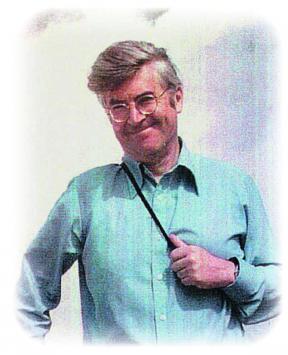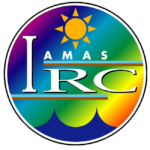Desmond Walshaw (1925–2013)

Obituary
Desmond Walshaw, a prominent expert on the ozone layer and ozone spectroscopy died on 24 April 2013 in Oxford at the age of 87.
Born in Coventry in 1925, Desmond Walshaw was educated at Clare College, Cambridge (UK). His time at university was interrupted by war service in the Royal Navy, where he served as a teacher, returning to Clare to complete his undergraduate degree and his PhD on the spectroscopy of ozone.
He was one of the pioneers in the study of Atmospheric Ozone, working with Gordon Dobson and Sir Charles Normande in calibrations of ozone spectrophotometers and their shipment to receiving stations. He studied under Richard Goody for his Ph.D., working on the spectroscopy of ozone in the laboratory, and later on measurements of ozone in the atmosphere using a ground based infrared spectrometer. This was in the early days of ozone research, and a time when health and safety was less of a concern than it is now. Ozone when liquified is unstable, and liable to explode – and did occasionally. He used to carry it in a dewar on his bicycle from the Cavendish Laboratory to the University Observatory, fortunately without incident!
During the International Geophysical Year he worked for the International Ozone Commission (IO3C) as a ‘travelling physicist’, inspecting and improving operations of the European network of ozone spectrophotometers that had been set up by Gordon Dobson (incidentally, a global Dobson network is still in operation).
After the IGY he joined the small Meteorology Department at Cambridge where he worked on a wide range of topics relating to atmospheric ozone. In 1963 the opportunity arose to migrate to Oxford, where he became a University Lecturer in Atmospheric Physics at the Clarendon Laboratory, in the then small Meteorology Department founded by Gordon Dobson many years earlier. He supervised many D Phil students, who have fond memories of his kindness and helpfulness.
He participated in 3 WMO organized international intercomparisons of Dobson instruments (Belsk, Boulder, Potsdam) and on the well-known Ozone and Radiation Comission celebrated in Oxford in 1959. On the international science scene, he became a member of the IO3C in 1964, and its secretary from 1976 to 1984. After his retirement in 1984 he devoted himself in providing social assistance to those in most need of it, through prison visiting and community work. Nevertheless, he still found the time to regularly attend the coffee time at the roof of the Atmospheric Physics Department building to chat and help the newcomers students and post-docs from abroad.
